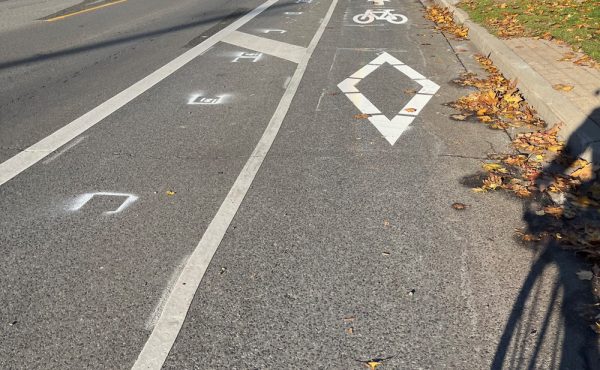
Cross-posted from Eye Daily.
Yesterday, before the city’s Public Works and Infrastructure Committee discussed a report (PDF) detailing many small, but exiting, ideas for improving life for pedestrians, cyclists and transit users, there was one matter it had to take care of: whether or not to widen Steeles Avenue north of Morningside Heights.
What was interesting about this debate was that if it weren’t for the Region of York allowing a new residential development to be built north of Steeles, the question of whether or not to add additional lanes to the avenue would not have had to take place. (This was how the councillors on the committee explained it, anyway.) Like any new suburban-style development full of homes that will soon be full of people needing to drive to get where they need to go, making sure that there are enough roads and highways to move everyone should be part of the planning process. In this case, York allowed the development to go ahead, knowing that Toronto would then be forced to update their road infrastructure to deal with it.
“The solution to their predicament is to put a superhighway through our jurisdiction,†complained Councillor John Parker. “I’d like to see someone put a stop to this. We need better planning in our region.â€
Since no one wanted to agree to York’s plan, which involves building a new arterial road that would cut across the ecologically sensitive Rouge River, the widening of Steeles became the center of the debate. Should Toronto leave it at two lanes and teach York a lesson? Will widening the avenue simply invite more traffic or is more traffic inevitable? The discussion involved a variety of thoughts on highway construction and automobile use — opinions, ideas and justifications that we’re bound to hear more of in the future.
Adam Giambrone was against the widening. “There is well-founded research that suggests the more lanes of traffic you put in, the more traffic you can generate,†he argued. “If you build it, they will come.*”
Parker, despite his disdain for York’s poor planning, said that this area of Steeles should be widened from two lanes to six. “If we’re going to make an investment to upgrade Steeles anyway, we might as well look to the future…. Let’s do it now the way it’s ultimately going to be done,†he said.
Shelley Carroll supported widening the avenue to six lanes as well. Part of her reasoning was that if it’s widened now, we’ll have the capacity to look at adding things such as a Light Rail Transit line on the road in the future. “I want the capacity to look at those sort of things to be there. These are my strong environmental reasons for doing this,†she said.
Raymond Cho (who had a petition from nearby residents saying they didn’t want more than four lanes) and Glenn De Baeremaeker were hesitant to give York region the satisfaction of even widening the avenue an inch. De Baeremaeker argued that it would only encourage more urban sprawl. “The minute we approve a wider road is the minute fifty more developments come through,†he argued. “More lanes means more urban sprawl means more pollution.â€
In the end, the committee voted in favour of widening the avenue to four lanes. They even agreed to look into building a Go Transit line to service the area. The decision made, they then moved on to the next item up for discussion: strategies to make it easier for people to ditch their cars in favour of walking, biking and taking public transit.
Click here to read the full staff report regarding widening Steeles.
(*Those who oppose tearing down the Matador for a parking lot, take note.)
Photo by Trevor Schwellnus



